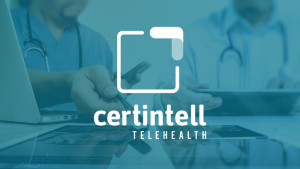Webinar Presenters:
- Alexis Guild, Farmworker Justice
- Beleny Reese, Health Outreach Partners
- Arielle Mather, National Center for Equitable Care for Elders
There’s no simple fix for chronic diseases. Care becomes even more complex when serving special and vulnerable populations, such as those facing social determinants of health or those with Limited English Proficiency (LEP). The Association of the Asian Pacific Community Health Organizations (AAPCHO) has designed a month-long learning series focused on diabetes management for these groups entitled, “Diabetes in Special and Vulnerable Populations: A Learning Series.” In part one, speakers addressed one main barrier to self-sufficient diabetes management: health literacy.
Ensuring Health Literacy
Arielle Mather from the National Center for Equitable Health Care for Elders says the definition of health literacy can be broken down into three parts:
- The degree to which an individual has the capacity to obtain, communicate, process and understand health information to make appropriate health decisions
- The degree to which they can find and understand health information and services to make health decisions in their favor
- The degree to which they possess a complex group of reading, listening, analytical and decision making skills and apply those skills to health situations
“Our understanding of health literacy in practice continues to grow and change,” Mather said, “moving from a focus on simply understanding health information to a patient’s ability to use that information in a way that positively impacts their wellbeing.”
With Healthy People’s 2030 strong focus on improving health literacy, on both the personal and organizational level, the conversation is pertinent now more than ever.
Those most likely to face low levels of health literacy include:
- Adults 65 years and older
- Minorities
- Refugees and immigrants
- High school graduates
- Low-income individuals
Barriers to Care: A Case Study
Beleny Reese from Health Outreach Partners highlighted that health literacy is a product of environment. When explaining the importance of awareness as to what unexpected and complex barriers can arise, Reese gave the example of the fictional Ximenez family.
The Ximenez family consists of two immigrant parents, Norma and Pedro; their American-born child, Daniel, and the grandmother who lives with them, Ana Cecilia.
Norma is pregnant and a native Spanish speaker with LEP. How will she navigate the complex information surrounding her pregnancy to make the best decisions for her and her baby in a language foreign to her? How will the provider help convey all the information in a way she can digest? It’s unlikely Norma’s family will be able to help her, how will she find the support?
Pedro has a history of diabetes on his mother’s side. It would be wise for him to seek preventative care. But does he have the resources and support in place to fully realize a preventative health care plan?
Daniel is bilingual at 12 years old. How will he be able to achieve some level of health literacy on his own, when his parents are not able to fully support him? What technology/tools are being used to help explain situations to him?
Ana Cecilia hails from an indigenous community in Guatemala and speaks limited English and Spanish; her native language is K’iche. She is 72 years old. How will she navigate the health care system, facing cultural differences and language barriers? She is less likely to find a translator for her native language. As an older adult, she’ll also face more complex health situations and may have trouble reading/digesting information, an effect that naturally comes with age.
Bracing for some of these obstacles can help providers prepare for complex needs.
Exploring Other Barriers to Diabetes Management
Alexis Guild from Farmworker’s Justice continued to highlight additional barriers members of these populations may face, including:
- Patient perspective barriers
- Use of medical jargon that the patient does not understand
- Lifestyle commitment
- E.g. Farmworkers may not be able to do exercise due to housing that is not conducive to activity after work or may simply not have the time
- Education
- Socioeconomic status
- Family support
- Stigma
- Time
- Cultural food preference (should be considered when discussing food adherence)
An overall lack of understanding greatly affects diabetes management. Patients feel less empowered to make changes to their habits and in some cases continue to repeat behaviors observed within their family.
Although this list is far from exhaustive, Reese recommends basic steps providers can incorporate into their care plans now to help overcome the health literacy barrier:
- Take universal precaution and speak in plain language
- Speak slowly
- Teach-back method: A provider confirms if the patient has understood or not by asking the patient to explain the information back to them
- Involve family and caregivers, however note that a patient may not always be comfortable in a situation like this, especially if the family member is a child or the health information being relayed is sensitive
Leverage Technology for Health Literacy
As mentioned in the webinar, using technology and tools to explain health information is a great way to help patients visualize and engage with what is being explained. The ability to access and understand health data could allow patients to be more proactive with their health. This can be done through services such as Remote Patient Monitoring (RPM). Wireless devices collect and transmit health data to both provider and patient through a secure portal. The use of health coaches can add to this experience as well. Our virtual health coaches can reach a patient, wherever they might be. The patient and their health coach can work together to explore health data, problem solve and conceptualize a detailed care plan. This allows the patient to ask more questions than they might be able to in a doctor’s appointment on limited time. Medical interpreters, available in more than 200 languages, can also be used in conjunction with our health coaches to help offset any language barriers.
Although health illiteracy isn’t completely preventable on a provider’s side, especially with time and resource constraints, the effort should still be made to improve the patient’s understanding of health data.



